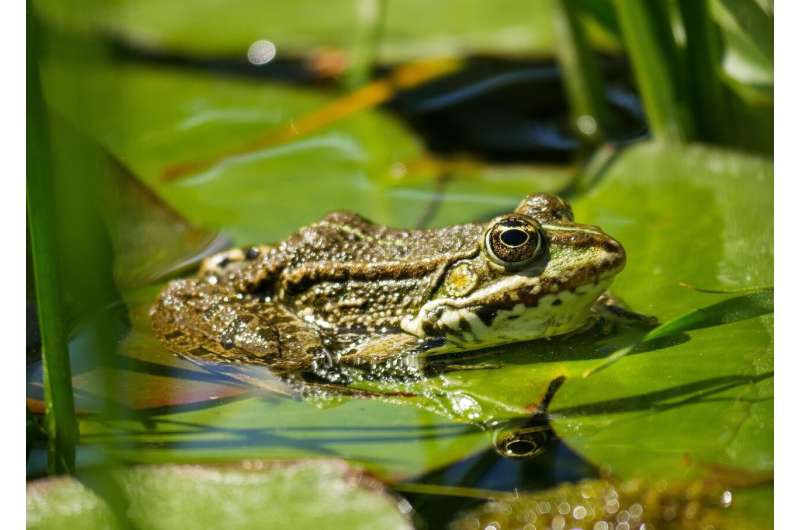Credit: CC0 Public Domain
A new study that aims to unravel the secrets of a disease that is destroying frog populations has yielded some unexpected results, which could change the way scientists fight the outbreak.
James Cook University biologist Dr. Donald McKnight said the disease chytridiomycosis has led to the decline or extinction of more than 500 amphibian species around the world.
“But not all amphibian species are susceptible to chytridiomycosis, and some species and populations that initially declined survive or increase despite the continued presence of the pathogen,” said Dr. McKnight.
For example, he said that Australian lace-capped frog populations were wiped out in upland areas and remain absent, while the waterfall frog had the same experience, but began to recolonize upland areas from the early 2000s. In contrast, the stony creek frog did not noticeably decrease at any height.
“The reasons for these differences between species and populations are not fully understood, but variations in microbiomes — the bacteria, fungi and other microorganisms on the frogs — may play a key role,” said Dr. McKnight.
Scientists examined both the bacterial and fungal microbiomes of four Australian frog species from the same area that had different responses to chytridiomycosis.
They found that microbiomes were different for each frog species and that they may have played a role in patterns of decline and recovery.
“The species that showed the lowest recovery capacity, lace covers, was also the species with the fewest types of bacteria and fungi on it. That’s consistent with what other studies have found and suggests that different microbiomes may be important.
“What was really surprising, however, was that lace covers also contained high levels of antifungal bacteria that are thought to play a protective role against chytridiomycosis. In fact, the individuals with the highest levels of chytridiomycosis were also the individuals with the highest levels of antifungal bacteria,” said Dr. McKnight.
He said the relative abundance of what were considered protective, anti-fungal bacteria was highest in the Australian lace-up frog and lowest in the waterfall frog, despite the fact that lace-cap populations have not recovered, but waterfall frogs have largely recovered.
dr. McKnight said the findings leave scientists with more questions and a variety of possible answers.
“For example, it could be that the presence of the fungus that causes chytridiomycosis actually allows antifungal bacteria to thrive, or there may be some other factor in the frogs’ environment that favors both the bacteria and the pathogen. Or possibly just frogs with high levels of antifungal bacteria.” can survive high infection loads,” said Dr. McKnight.
He said the research has important implications for conservation.
“In laboratory trials, seeding amphibians with antifungal bacteria (probiotics) often reduces mortality and allows frogs to clear infection or reduce infection intensity.
“So, probiotics are widely regarded as a promising strategy for reducing disease in wild populations and aiding population recovery. Unfortunately, our results suggest that this strategy may not work unless probiotics use a wide range of bacteria, and they may need to be specific be adapted for each frog species,” said Dr. McKnight.
Bacteria in frog skin could help fight fungal infections in humans
Donald T. McKnight et al, The interplay of fungal and bacterial microbiomes on rainforest frogs after a disease outbreak, Ecosphere (2022). DOI: 10.1002/ecs2.4037
Quote: Study yields new clues to deadly frog disease (2022, July 16) retrieved July 16, 2022 from https://phys.org/news/2022-07-clues-killer-frog-disease.html
This document is copyrighted. Other than fair dealing for personal study or research, nothing may be reproduced without written permission. The content is provided for informational purposes only.

